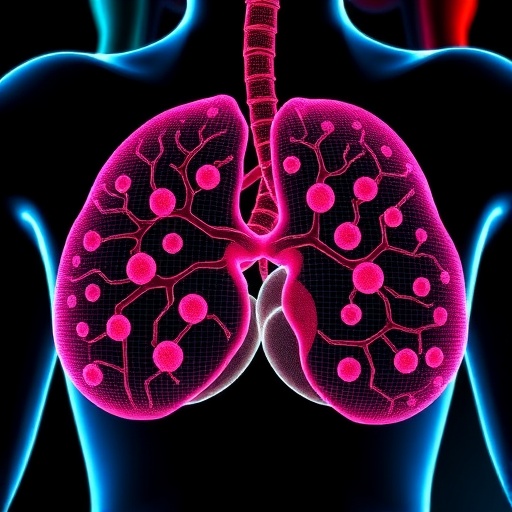A majority of displaced adolescent girls are victimized by violence, according to a new study in the Democratic Republic of Congo and Ethiopia by researchers at Columbia University's Mailman School of Public Health. The study, published in the Journal of Global Health, provides new details on the forms of violence affecting adolescent girls in humanitarian settings, and for the first time, predictors of violence, often perpetrated by family members and intimate partners.
Researchers used tablet computers to survey 1,296 girls, ages 13-19, in South Kivu, Democratic Republic of Congo, where conflict has displaced millions within the country, and in refugee camps in the Benishangul-Gumuz region of Ethiopia, home to people fleeing conflict in Sudan and South Sudan.
The majority of adolescent girls (52 percent) reported experiencing at least one form of violence victimization in the previous 12 months: 32 percent reported being hit or beaten, 37 percent reported being screamed at loudly or aggressively, and 27 percent experienced unwanted sexual touching and/or rape. The vast majority of girls reported that their intimate partners and/or other family members were perpetrators of violence.
"Girls in conflict settings are the victims of disturbing patterns of violence beginning in adolescence and even earlier," says lead author Lindsay Stark, associate professor of Population and Family Health. "Our paper is one of the first to document high rates of violence against conflict-affected girls as young as age 13. Our data show that girls as young as 10 are frequent victims of violence."
Filling Research Gaps
According to the researchers, gaps in knowledge of violence against adolescent girls have limited the humanitarian community's ability to appropriately respond to and prevent this violence. To date, studies that examine violence in armed conflicts have focused primarily on the health-related consequences of violence, not its predictors, and on females over the age of 15, not younger adolescents. Further, the data suggest that efforts to target girls in mid- to late- adolescence in hopes of downstream prevention efforts may already be too late.
Prevention Strategies
In the new study, the researchers identify several context-specific predictors of violence. Ever having a boyfriend and living with an intimate partner are associated with coerced and forced sex in both DRC and in Ethiopia. In the DRC, each year of schooling completed is associated with lower odds of experiencing violence. On the other hand, living only with one's father and young age are predictors for violence in Ethiopia, but not DRC.
"Attention should be paid to context, and prevention programming should do more to acknowledge the role of intimate partner relationships, and how dating and early marriage often put girls at greater risk for violence," says Stark. "We also need to work across different levels of society to create safer environments in which conflict-affected girls can grow and thrive.
"A girl's safety is determined by many factors, from her family's economic security and approach to parenting, whether she can move freely in public spaces, whether she can attend and stay in school, as well as the larger context, including prevailing gender norms," she continues.
Countering Collective Wisdom
The findings contradict local narratives suggesting that girls are most at risk of violence at the hands of strangers or military personnel–misperceptions that past research methods may be inadvertently reinforced. For a study published in PLOS ONE, Stark and colleagues interviewed the same conflict-affected girls in a group setting, and heard almost exclusively about violence perpetrated by strangers. By contrast, when they used tablet computers that afforded greater privacy, girls described violence predominantly perpetrated by family members and intimate partners.
While the tablet method likely provides a truer picture of the violence, Stark says the group discussions provides important perspective about how violence is understood and expressed. "You want to know how people talk about these issues, so you can design a program that both addresses violence and considers those prevailing social norms."
Violence against women and girls is a global epidemic that affects one in three women and one in four girls under the age of 18, according to the World Health Organization. Worldwide, females are at highest risk for violence during adolescence, and violence is the second leading cause of death for adolescent girls. Various studies have linked violence with negative health consequences, including increased risk of HIV infection, unintended pregnancy, alcohol and substance abuse, depression, post-traumatic stress disorder, and suicide.
###
The study is part of the Creating Opportunities through Mentorship, Parental Involvement, and Safe Spaces (COMPASS) Program Evaluation, conducted by Columbia University and the International Rescue Committee. Co-authors include Khudejha Asghar and Gary Yu at the Mailman School; and Caroline Bora, Asham Assazenew Baysa, and Kathryn Falb at the International Rescue Committee. Funding was provided the U.K. Department for International Development. The authors declare no conflicts.
Media Contact
Timothy S. Paul
[email protected]
212-305-2676
@ColumbiaMSPH
http://www.mailman.hs.columbia.edu
############
Story Source: Materials provided by Scienmag




